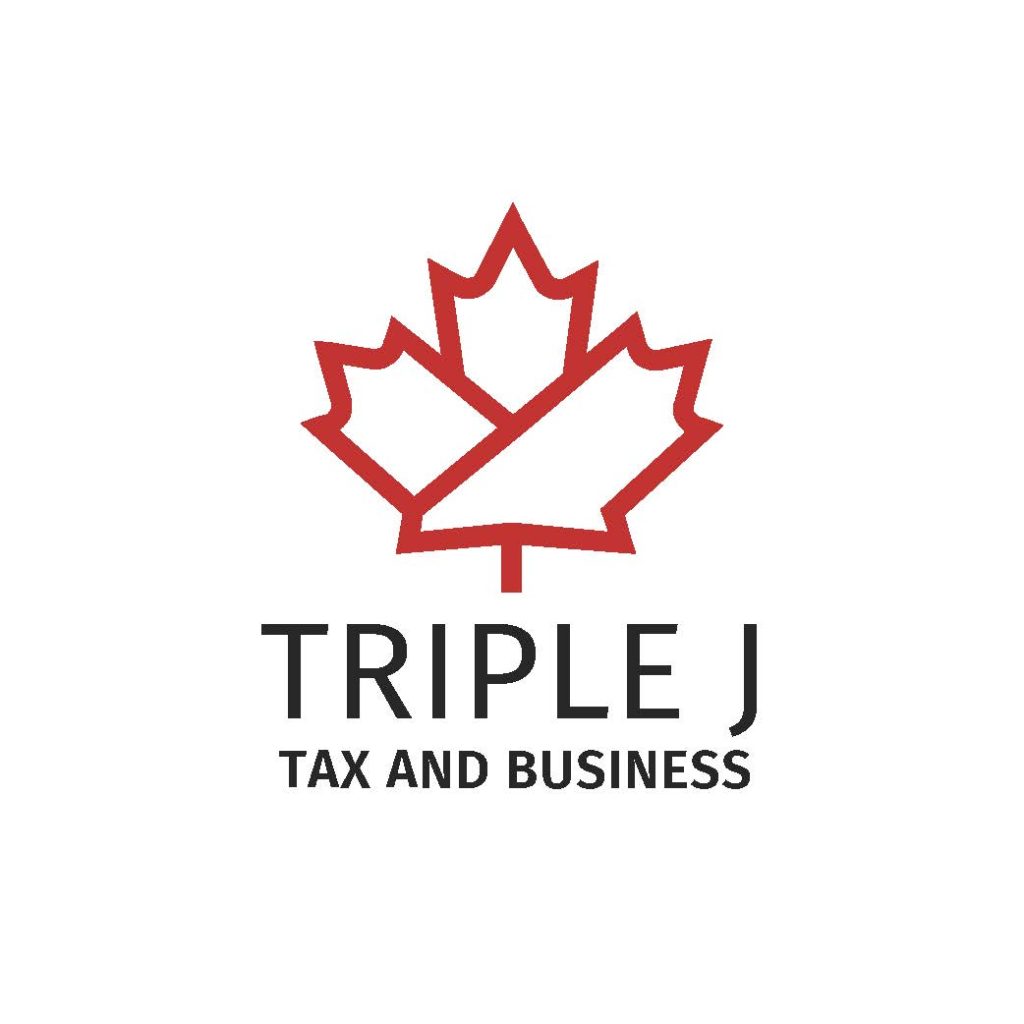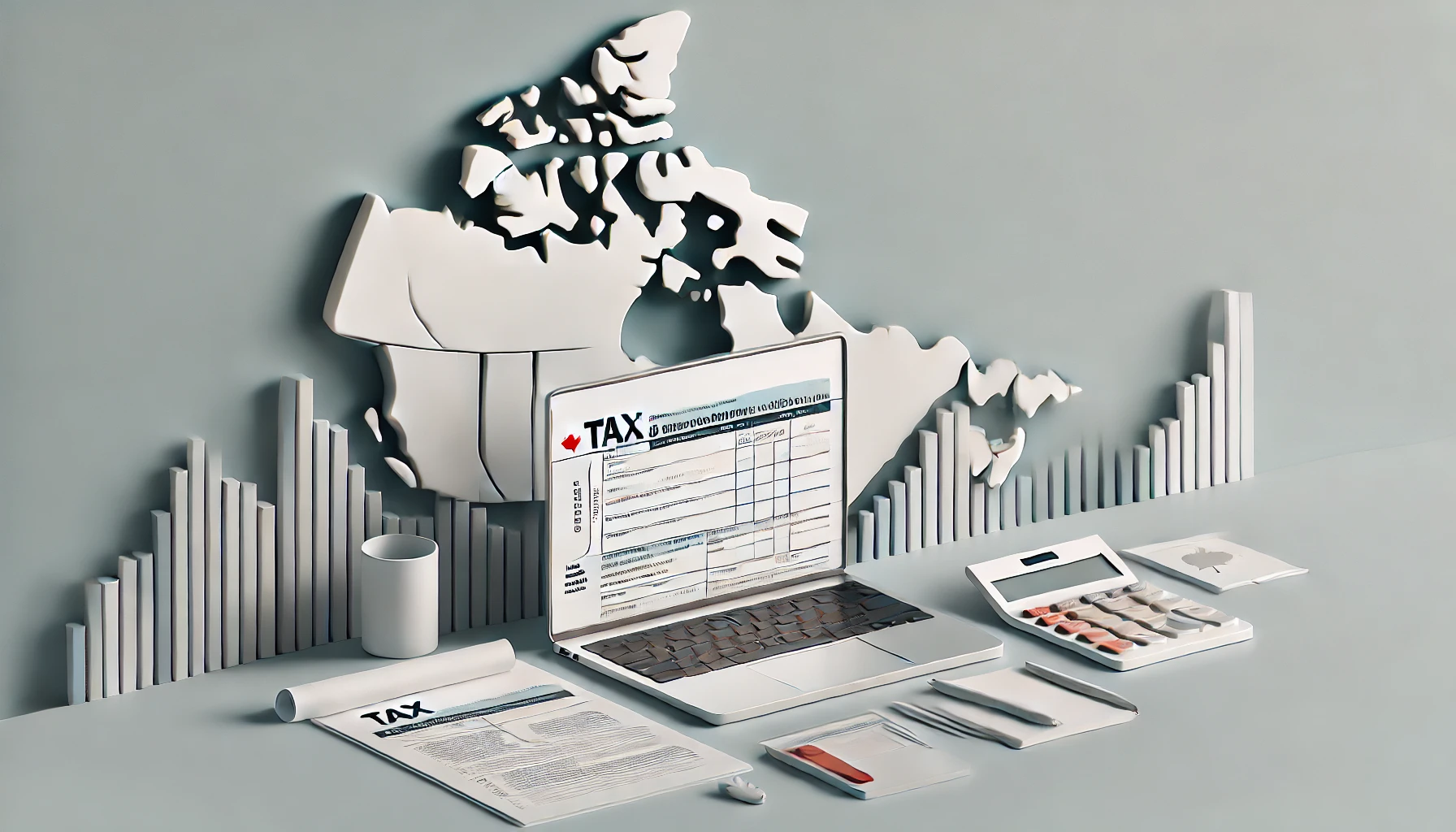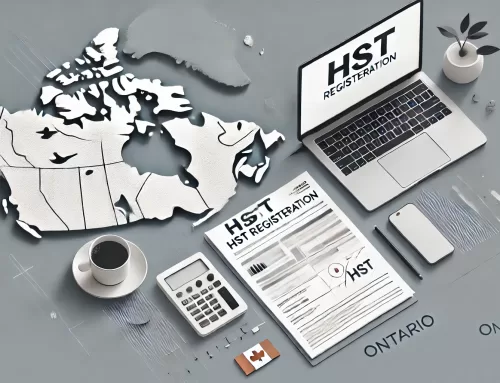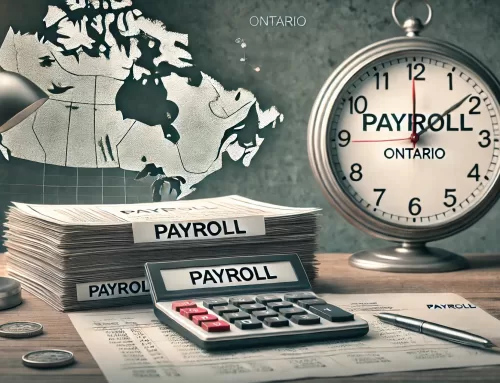As a self-employed professional in Ontario, managing taxes can feel overwhelming. Unlike traditional employees, you’re responsible for handling your own income taxes, tracking expenses, and staying compliant with CRA regulations. Building a tax strategy tailored to your unique situation can make the process more manageable and save you money in the long run.
Understanding Tax Obligations for Self-Employed Professionals
As a self-employed professional in Ontario, managing taxes can feel overwhelming. Unlike traditional employees, you’re responsible for handling your own income taxes, tracking expenses, and staying compliant with CRA regulations. Building a tax strategy tailored to your unique situation can make the process more manageable and save you money in the long run.
What it Means to Be Self-Employed in Ontario
Being self-employed means you operate your own business, either as a sole proprietor or through an unincorporated partnership. You’re not on an employer’s payroll, and instead, your income is earned directly from clients or customers.
Examples of Self-Employment:
- Freelancers such as writers, designers, and developers.
- Consultants offering professional advice or services.
- Sole proprietors running small businesses.
Key Differences from Being an Employee:
- Income Tax Responsibility: As a self-employed professional, you’re responsible for calculating and remitting your own taxes.
- No Employer Deductions: Unlike employees, you don’t have income tax, CPP, or EI automatically deducted from your earnings.
- Flexibility in Deductions: Self-employed individuals can deduct business-related expenses to lower taxable income.
Overview of Tax Obligations
Self-employed professionals in Ontario have several key tax responsibilities. Understanding these will help you develop a strategy to meet your obligations and avoid penalties.
1. Income Tax:
- Your business income must be reported on your personal tax return using Form T2125, the Statement of Business or Professional Activities.
- Income tax rates in Ontario are progressive, meaning higher income is taxed at a higher rate.
2. HST/GST:
- If your annual revenue exceeds $30,000, you must register for and charge HST/GST.
- You’re responsible for collecting the tax from clients and remitting it to the CRA.
3. CPP Contributions:
- As a self-employed individual, you must pay both the employee and employer portions of the Canada Pension Plan (CPP).
- For 2024, the combined CPP contribution rate is 11.9% on net income up to the annual maximum.
Important Deadlines:
- Tax Filing: Self-employed individuals have until June 15 to file their tax returns, but any taxes owed must be paid by April 30.
- HST/GST Remittance: Deadlines vary based on your reporting period (monthly, quarterly, or annually).
Pro Tip: Mark all tax deadlines on your calendar and set reminders to avoid late filings or payments.
Common Tax Challenges for Self-Employed Professionals
Managing taxes as a self-employed professional comes with unique challenges. Identifying these obstacles is the first step toward building a strategy to overcome them.
Tracking Income and Expenses
The Challenge:
Inconsistent income streams and a mix of personal and business expenses make it difficult to track finances accurately.
Why It’s an Issue:
- Disorganized records can lead to missed deductions and overpayment of taxes.
- Poor tracking complicates HST/GST filings and income reporting.
Example: A graphic designer who doesn’t separate personal and business expenses might struggle to identify deductible costs like software subscriptions or office supplies.
Pro Tip: Use accounting software or apps like Wave, QuickBooks, or FreshBooks to track income and expenses in real-time.
Navigating HST/GST Requirements
The Challenge:
Understanding whether you need to register for HST/GST and managing the collection and remittance process.
Why It’s an Issue:
- Many self-employed professionals are unaware of the $30,000 threshold or delay registration, resulting in penalties.
- Miscalculating HST/GST or failing to remit it on time can lead to CRA fines.
Example: A photographer who exceeds $30,000 in annual revenue but hasn’t registered for HST must remit taxes retroactively, even if they didn’t charge clients.
Pro Tip: Register for HST/GST as soon as you approach the threshold and include it as a line item on your invoices.
Estimating Quarterly Tax Payments
The Challenge:
Self-employed professionals must make quarterly tax instalments if they owe more than $3,000 in taxes for the current or previous year. Forecasting earnings can be tricky, especially with fluctuating income.
Why It’s an Issue:
- Underestimating earnings leads to insufficient instalments and penalties.
- Overestimating instalments ties up cash flow unnecessarily.
Example: A consultant earning seasonal income might struggle to set aside enough for quarterly payments during slower months.
Pro Tip: Calculate instalments based on last year’s income as a baseline and adjust for any significant changes in your business.
Steps to Build an Effective Tax Strategy
Creating a solid tax strategy involves organizing your finances, understanding deductions, and planning for tax payments. These steps ensure that you’re not only compliant but also optimizing your tax situation.
Organizing Your Financial Records
Good record-keeping is the foundation of any effective tax strategy. Keeping accurate and detailed records helps you track expenses, prepare for audits, and maximize deductions.
How to Organize Your Records:
- Use Accounting Software: Platforms like QuickBooks, FreshBooks, or Wave can track income, expenses, and HST/GST in real-time.
- Separate Business and Personal Finances: Open a dedicated business bank account and credit card to make tracking easier.
- Save Receipts and Invoices: Keep both digital and physical copies of all receipts related to business expenses.
- Regularly Reconcile Records: Review your income and expenses monthly to ensure accuracy.
Pro Tip: Consider using expense-tracking apps like Expensify to simplify recording on-the-go purchases.
Understanding Tax Deductions
Deductions can significantly reduce your taxable income, making them a key part of your tax strategy. However, to maximize savings, you must know which expenses qualify and keep proper documentation.
Common Deductions for Self-Employed Professionals in Ontario:
- Home Office Expenses: Deduct a portion of your rent or mortgage, utilities, and internet if you work from home.
- Transportation Costs: Include mileage, gas, and maintenance for vehicles used for business.
- Professional Services: Accounting, legal, or consulting fees are deductible.
- Tools and Equipment: Claim expenses for laptops, software, and other tools directly related to your work.
- Marketing and Advertising: Deduct costs for websites, social media ads, or other promotional activities.
How to Maximize Deductions:
- Keep detailed records, including receipts and invoices, to support claims.
- Use CRA guidelines to confirm which expenses are partially or fully deductible.
- Avoid combining personal and business expenses to prevent confusion during filing.
Pro Tip: Consult a tax professional to ensure you’re not missing out on less obvious deductions.
Planning for Quarterly Tax Payments
Unlike salaried employees, self-employed professionals are responsible for remitting their own taxes, often through quarterly instalments. Proper planning prevents cash flow issues and penalties.
Steps to Plan for Tax Payments:
- Estimate Your Taxable Income: Use your previous year’s income as a baseline and adjust for current business growth or changes.
- Set Aside Funds Monthly: Allocate 20–30% of your income for taxes to ensure you’re prepared.
- Use CRA Online Tools: The CRA provides instalment calculators to help you determine the amount due.
- Create a Dedicated Tax Savings Account: Store funds in a separate account to avoid using them for other expenses.
Pro Tip: Review your instalment amounts periodically, especially if your income fluctuates.
Advanced Tax Strategies for Self-Employed Professionals
Once you’ve established the basics, advanced strategies can further optimize your tax situation. These approaches can help you save more and plan for long-term financial health.
Incorporating Your Business
If your business income has grown significantly, incorporation can offer tax advantages and additional benefits.
Benefits of Incorporation:
- Lower Corporate Tax Rates: Corporations pay a lower tax rate on the first $500,000 of active business income.
- Income Splitting: Dividends can be paid to family members, spreading income across lower tax brackets.
- Limited Liability: Incorporation separates your personal and business assets, protecting you from personal liability.
Drawbacks of Incorporation:
- Higher administrative costs and more complex tax filings.
- Limited benefit for freelancers or professionals with modest incomes.
Pro Tip: Speak with an accountant to determine if incorporation aligns with your financial goals.
Leveraging Retirement Savings Plans (RRSPs)
RRSPs are a powerful tool for self-employed professionals to save for retirement while reducing taxable income.
How RRSPs Benefit Self-Employed Professionals:
- Tax Deduction: Contributions reduce your taxable income for the year, lowering your tax liability.
- Tax-Deferred Growth: Investments grow tax-free until withdrawal, typically during retirement when you’re in a lower tax bracket.
- Flexibility: Contributions can be adjusted annually based on your income.
Tips for Maximizing RRSP Contributions:
- Contribute regularly to take advantage of compounding growth.
- Use RRSP room carried forward from previous years.
- Consider spousal RRSPs to split income in retirement.
Exploring Income Splitting
Income splitting involves distributing income among family members to reduce overall tax liability. While not applicable to everyone, it can be an effective strategy for self-employed professionals with incorporated businesses.
Examples of Income Splitting:
- Paying salaries to a spouse or children for work they perform for your business.
- Dividing income through dividends to family members if your business is incorporated.
CRA Compliance:
- The CRA has strict rules on income splitting to prevent abuse. Ensure family members receiving payments are actively contributing to your business.
Pro Tip: Work with a tax advisor to implement income-splitting strategies that align with CRA regulations.
By implementing these steps and advanced strategies, you can create a tax plan that reduces your liability, maximizes deductions, and supports your long-term financial goals. Let me know when you’re ready to move on to the next sections: Staying Compliant with CRA Regulations and Conclusion!
How to Build a Tax Strategy as a Self-Employed Professional in Ontario
Staying Compliant with CRA Regulations
Compliance is an essential aspect of any tax strategy. Ensuring your financial practices align with CRA rules protects you from audits, penalties, and unnecessary stress.
Filing Your Taxes Correctly
Self-employed professionals must file their taxes accurately and on time to avoid fines or interest charges. Understanding the process and using the right tools can simplify this task.
Steps for Accurate Filing:
- Use the Correct Forms: Report your business income and expenses on Form T2125, which is part of your personal tax return.
- File by the Deadline: The filing deadline for self-employed individuals is June 15, but any taxes owed must be paid by April 30.
- Review for Errors: Double-check your calculations for income, expenses, and deductions to ensure accuracy.
Filing Options:
- CRA Online Services: Use the CRA’s NETFILE system for fast and secure filing.
- Tax Software: Programs like TurboTax or UFile guide self-employed professionals through the filing process.
- Professional Help: Hiring an accountant ensures compliance and accuracy, especially if your taxes are complex.
Pro Tip: Start preparing your tax documents early to avoid last-minute rushes and potential mistakes.
Preparing for Potential Audits
While most self-employed professionals won’t face an audit, it’s important to be prepared in case the CRA requests additional information about your tax filings.
What Triggers a CRA Audit?
- Reporting unusually high deductions compared to income.
- Frequent or significant changes in reported income or expenses.
- Discrepancies between your reported income and third-party information (e.g., client-issued T4As).
How to Prepare:
- Keep Detailed Records: Maintain clear and organized documentation for all income and expenses, including receipts and invoices.
- Be Transparent: Ensure your filings reflect an accurate picture of your financial situation.
- Respond Promptly: If the CRA contacts you for clarification or additional information, reply within the specified timeframe.
Pro Tip: An accountant can act as your representative during an audit, ensuring the CRA receives the necessary information while protecting your interests.
Conclusion
Building a tax strategy as a self-employed professional in Ontario requires proactive planning, organization, and a clear understanding of CRA regulations. By tracking your income and expenses, leveraging deductions, and staying compliant with tax laws, you can minimize your tax liability and maximize your financial health.
The Importance of a Proactive Tax Strategy
A well-constructed tax strategy not only simplifies your financial management but also provides peace of mind. Whether you’re just starting your self-employed journey or looking to optimize your tax practices, taking the time to plan effectively can save you money and reduce stress.
Key Takeaways:
- Organize your financial records with tools like accounting software.
- Maximize deductions by keeping detailed documentation of eligible expenses.
- Consider advanced strategies, such as incorporating your business or contributing to RRSPs, for long-term tax savings.
- Stay compliant by filing taxes correctly and preparing for potential audits.
Any tax questions?
Ready to simplify your taxes and optimize your financial strategy? Contact JJJ Canada for expert tax services tailored to self-employed professionals in Ontario. Let us help you build a customized plan that saves you time and money—so you can focus on growing your business!







Leave A Comment